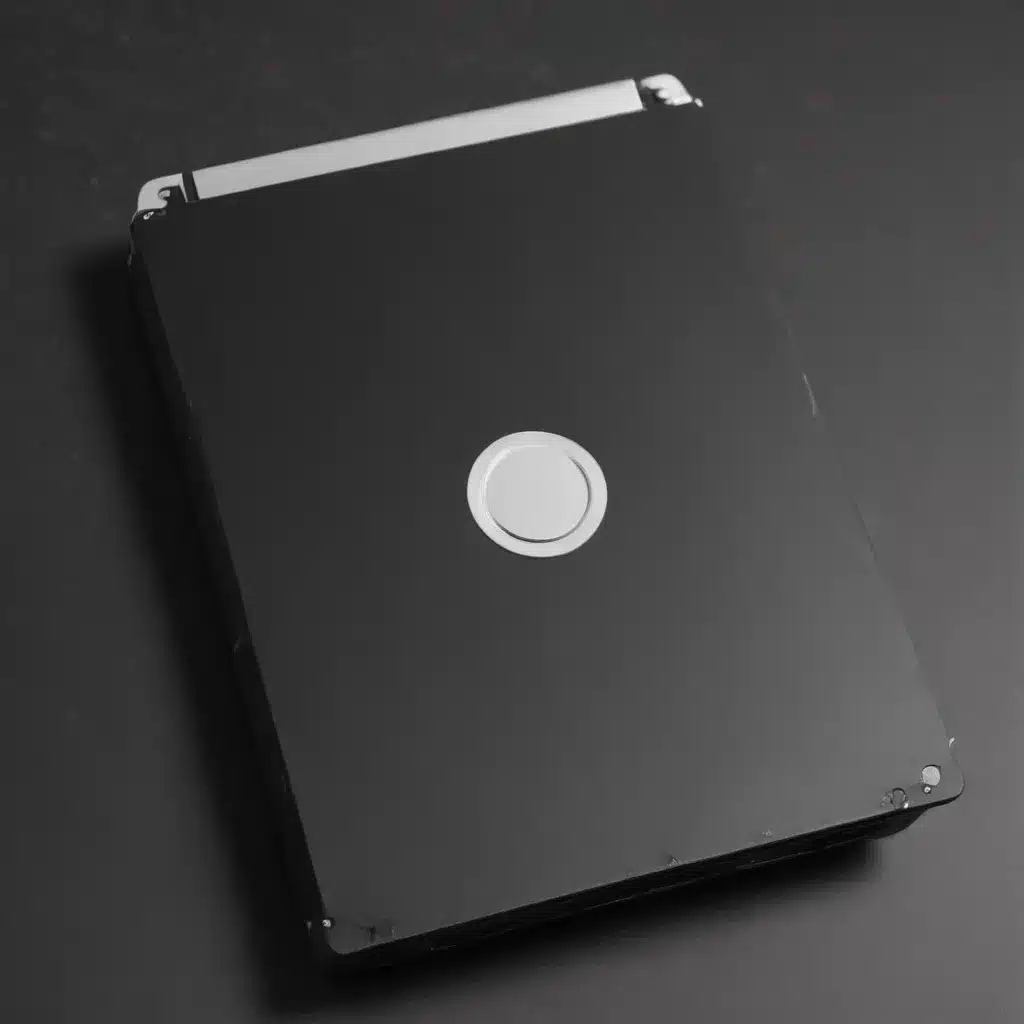The Case of the Disappearing Data
It was a dark and stormy night (okay, maybe not so dramatic, but you get the idea) when I found myself in a real pickle. My trusty old external hard drive, which I had been relying on to store all my precious data, suddenly decided it didn’t want to play ball anymore. As I frantically plugged it in and watched the little lights on the front flicker halfheartedly, my heart sank – the dreaded “device not recognised” message stared back at me from the screen.
Now, I’m not one to panic, but let me tell you, the thought of losing all my files, documents, and precious memories was enough to make my palms sweat. I mean, we’re talking family photos, work projects, that embarrassing karaoke video from the office party (hey, don’t judge!). All of it, potentially gone forever.
Troubleshooting the Troublemaker
But I’m not the type to give up without a fight. I rolled up my sleeves, took a deep breath, and set out to tackle this mystery head-on. First, I tried the good old “unplug and plug back in” trick, but alas, the drive remained as stubborn as a mule. Next, I scoured the internet for any clues or solutions, sifting through forums and Reddit threads like a digital detective [1][2].
One thing that caught my eye was a suggestion to try a different USB cable. Apparently, these little guys can be the weak link in the chain, and a faulty or incompatible cable could be the culprit behind my drive’s disappearing act. So, I rummaged through my drawer of tech odds and ends, found an alternative cable, and gave it a shot. But still, no luck.
Digging Deeper
Undeterred, I decided to take a more hands-on approach. I carefully cracked open the external hard drive enclosure, exposing the precious cargo within. Now, I know what you’re thinking – “Whoa there, buddy! Aren’t you going to void the warranty or something?” Well, call me a rebel, but desperate times call for desperate measures. [3]
As I inspected the innards, I noticed that the drive itself seemed to be in decent shape, with no obvious signs of physical damage. Hmm, curious. Could it be a compatibility issue with my computer’s USB ports? I mean, this drive was a relic from the early 2000s, back when USB 2.0 was all the rage. Maybe my shiny new laptop, with its fancy USB 3.0 ports, just wasn’t playing nice.
Calling in the Reinforcements
At this point, I knew I needed some serious help. I couldn’t just sit around and watch my data slowly slip through my fingers. So, I reached out to a tech-savvy friend, the kind of person who can make a computer do backflips with just a few keystrokes. [4]
Together, we tried a few more tricks, like downloading some specialized diagnostic software and connecting the drive directly to the SATA ports on my friend’s desktop. And you know what? It worked! The drive was recognized, and we were able to access the files. Phew, crisis averted!
Backing Up, Backing Up, Backing Up
But the real lesson here, my friends, is that we should never take our data for granted. As I sat there, staring at the familiar folder structure on the screen, I realized just how close I had come to losing it all. That’s why I made a solemn vow (okay, maybe not so solemn, but you get the idea) to always, always, always have a backup plan in place.
From that day forward, I made sure to keep a second copy of my important files on a separate external drive, and I even dabbled in the world of cloud storage. Because let’s face it, technology can be fickle, and you never know when a hard drive might decide to go on strike. [5][6]
A Happy Ending (and a Cautionary Tale)
So, there you have it, the tale of my external hard drive drama. It was a wild ride, full of twists and turns, but in the end, I emerged victorious, with my data intact and a newfound appreciation for the importance of backups.
If you’ve found yourself in a similar predicament, take heart – with a little troubleshooting, some tech-savvy help, and a healthy dose of persistence, you too can conquer the enigma of the unrecognized external hard drive. Just remember, prevention is better than cure, so don’t be like me and wait for disaster to strike. Start backing up your data today, and you’ll be one step ahead of the game.
Happy computing, my friends!
References:
[1] [Knowledge from https://www.reddit.com/r/PS4/comments/6fgwvz/image_so_heres_the_dilemma_my_ps4_cant_repair_my/]
[2] [Knowledge from https://www.youtube.com/watch?v=FX-CI3DB4QE]
[3] [Knowledge from https://community.wd.com/t/old-generation-external-storage-hard-drive-question/156736]
[4] [Knowledge from https://community.wd.com/t/4tb-on-mbr-and-not-gpt/208765]
[5] [Knowledge from https://4ddig.tenorshare.com/hard-drive/how-to-recover-data-from-hard-disk-which-is-not-detecting.html]
[6] [Knowledge from https://community.wd.com/t/removed-d4-diode-1-0-tb-caviar-green-now-powers-up-but-not-detected-when-connected-to-pc/6237]













